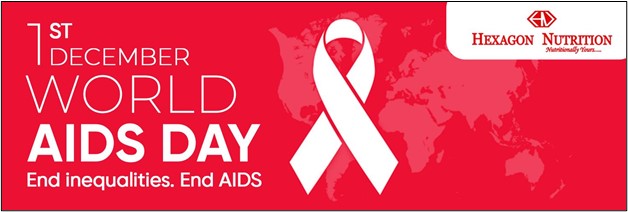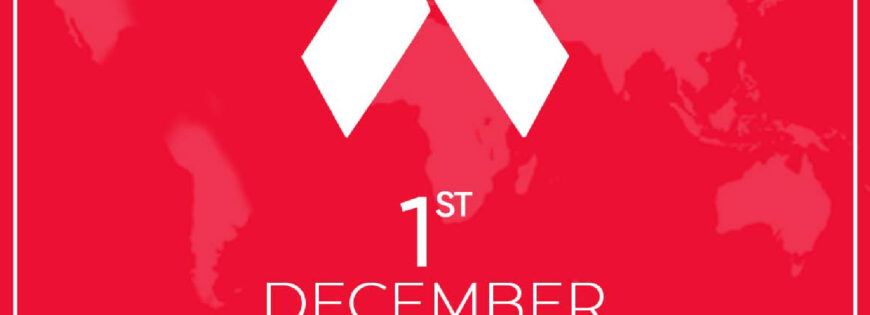

In 2020, 680 000 people died from HIV-related conditions and 1.5 million people contracted HIV, which refers to the human immunodeficiency virus that attacks the immune system and impairs an individual’s defense against several infections including some common types of cancer that people can otherwise fight off easily. AIDS is an advanced version of this condition that develops certain cancerous cells at a speedy rate, including infections bearing long chronic implications over the period of time.
How does an individual contract HIV?
An Individual can get infected by HIV through the transmission of blood, breast milk, semen, or/ and vaginal secretions. In many instances, it’s transmitted from a mother to her child during pregnancy or delivery, further during regular contact with the child that involves kissing, hugging, shaking hands, or sharing personal objects, like food, or water.
Area of Concerns/Exposure to HIV Virus
Knowing the areas of risk can help one deter the chances of contracting HIV. Following are some common instances if not avoided can cause the deadly HIV Virus to enter your system
- Engaging in unprotected anal, oral or vaginal sex without using contraception.
- Having another sexually transmitted infection (STI) such as syphilis, herpes, chlamydia, gonorrhea, and bacterial vaginosis.
- Sharing infected needles, syringes, and other injecting equipment including drugs & other medication.
- Allowing unsafe vaccinations, injections or blood transfusions and tissue transplantation, with medical procedures that use unsterile cutting, penetrating, or piercing; and
- Encountering random needle stick injuries, including among health workersIndia has the third-largest HIV epidemic in the world, with 2.1 million people living with HIV. The presence of many vulnerable groups involving:
- Sex Workers – In 2017, data reported to UNAIDS suggests around 67% of HIV-positive sex workers were aware of their status, and 91% of sex workers (HIV positive and negative) reported using condoms.
- Men who have sex with men (MSM) – A 2015 study of men who have sex with men, conducted across 12 Indian cities, found 7% tested HIV positive. Just under a third (30%) of those who reported having anal or oral sex with a man in the past 12 months were married to a woman and engaging in heterosexual sex.
- People who inject drugs (PWID) – In 2017, 6.3% of people who inject drugs were living with HIV, of whom 50% were cognizant of their status.
- Migrant workers including truck drivers – There are an estimated 7.2 million migrant workers in India, of whom 0.2% are thought to be living with HIV among which there is a high vulnerability of truckers to HIV transmission in India as NACO estimated that 0.2% of truck drivers were living with HIV in 2017/18.
These are the marginalized and vulnerable groups of people with very limited or no access to proper HIV treatment or precautionary care. World AIDS Day,2021 – End inequalities. End AIDS focuses on the provision and access of adequate healthcare infrastructure for people living with HIV. Initiatives are made across the nation to diagnose and treat the HIV Virus living in their bodies, spreading across their communities. Here’s a gist!


Diagnosis and Treatment of HIV
Antiretroviral therapy (ART) helps in the early detection, diagnosis, and treatment of HIV, People failing to get Antiretroviral therapy (ART) may develop HIV within 5–10 years or even sooner with the occurrence of any of the more than 20 life-threatening cancers or “opportunistic infections”. Hence people should be regularly tested, to avoid undetectable symptoms. Tuberculosis (TB) is the topmost cause of death among people living with HIV, hence it’s suggested to do Routine TB-symptom screening with early initiation of (ART) Antiretroviral therapy.
Rapid diagnostic tests with full-body testing and using contraceptives, encouraging protected sex can reduce the risk of human papillomavirus (HPV) infection where people are 6 times more likely to develop cervical cancer, among several other examples. Regular Sterilization needle/syringes and other injecting equipment through needle/syringe programs assist people who inject drugs to use a sterile needle/syringe at each injection, reducing their risk of HIV. Opioid substitution therapy (OST) is an evidence-based treatment for opioid dependence which reduces HIV risk and has other health benefits. Prevention of vertical transmission between a mother and a child can be done with early initiation of ART with a short course of antiretroviral drugs for the baby. Pre-exposure prophylaxis, or PrEP, is one of the most effective drugs recommended to sex workers; men who have sex with men or people who use drugs o prevent HIV acquisition.
Is there a permanent Cure for HIV?
Several Reports suggest that in one of the case studies, 2 people underwent a bone marrow transplant for cancer with re-infusion of new CD4 T cells that are incapable of being infected with HIV. As per our understanding and the factual data available with us suggests that unfortunately there is no magical cure for ending HIV. However, with the early detection, precautions, treatment, and most importantly nutrition mentioned above, people across the globe are living a long life with HIV.
HIV and Nutrition
Food safety is the most basic measure taken to maintain the immunity of an HIV-exposed individual as HIV weakens the immune system and foodborne illnesses or food poisoning can leave a lasting impact. A structured diet plan combination of three or more antiretroviral (ARV) drugs from at least two different HIV drug classes can prove to be effective in treating HIV.
What should be included in a basic diet?
In general, the basics of a healthy diet are the same for everyone, including people with HIV.
- Eating a mixture of foods from the five food groups: fruits, vegetables, grains, protein foods, and dairy.
- Eating the correct amount of food to maintain a healthy weight.
- Choosing foods low in saturated fat, sodium (salt), and added sugars. Foods should be strictly avoided.
- Raw eggs or foods that contain raw eggs, for example, homemade cookie dough
- Raw or undercooked poultry, meat, and seafood
- Unpasteurized milk or dairy products and fruit juices


HIV and Covid-19 Pandemic
COVID-19 pandemic has created a significant burden on these vulnerable populations in terms of financial aid, availing health services, and psychological issues (fear, anxiety, depression). Maharashtra, with 3.96 lakh infections, and Andhra Pradesh with 3.14 lakh infections are the two most HIV/AIDS-affected Indian states with no dedicated hospitals for HIV, however, till July 2020, there were 570 ART centers and 1264 link ART centers running under the National AIDS Control Program of the government of India. The focus of medical infrastructure is currently shifted to treating covid-19 with nationwide lockdown that restricted movement and regular checkups, HIV confirmatory tests, & treatment of HIV patients. Hence we need adequate resources and attention to combat this deterring situation by creating more accessibility and ending inequality in treating HIV AIDS. Let’s together urge our nation to End inequalities. End AIDS. Initiatives such as End AIDS India is a campaign by Alliance India to create awareness and mobilize resources to fund HIV response programs in India to accelerate the response to the HIV epidemic in India by Preventing transmission; Educating people living with HIV/AIDS and Empowering vulnerable and affected communities by developing vocational skills, promoting access to revenue creation opportunities, and connecting them to social welfare schemes. Visit the following sources to know more about populations most affected by HIV in India, testing and counselling, prevention programmes,antiretroviral treatment availability, civil society’s role, HIV and TB, barriers to the HIV response, funding and the future of HIV in India.
Hexagon Nutrition is one of the most reliable and dependable nutrition brands across the globe which is working towards the production, provision, and promotion of micro-nutrient premixes, a vital source of essential nutrients needed in our day to day life to balance and improve our nutritional needs. We are gratified to propel our food fortification initiatives across the globe for decades and we would continue to help governmental and non-governmental organizations combat the hidden hunger and malnutrition. Join us in the movement, to know more, visit www.hexagonnutrition.com.



